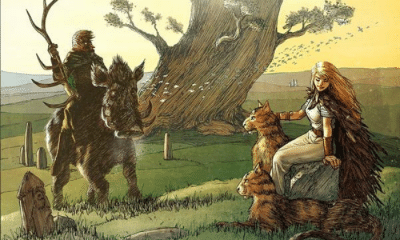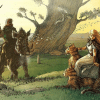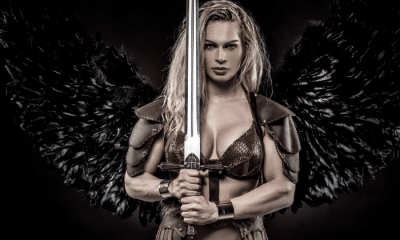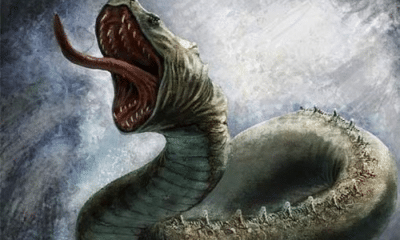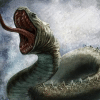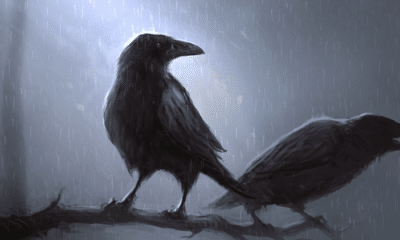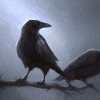
Norse
The Norse Creation Myth
The Norse Creation Myth
Every culture had its own explanation for how the word was created, but do you know how the Norse believed the Earth and the gods came into being?
In every region of the world, mythology has been used to explain the workings of the universe. Things that mankind was unable to explain were attributed to deities, monsters, and fate.
One of the biggest questions people have always had was how the world and mankind were created. Until the 20th century, there was no explanation for the origins of the universe other than the supernatural.
The Norse people, like all other ancient cultures, had their own explanation for how the world began.
Many aspects of this creation myth are familiar, but some seem especially fantastical or surprising. Even the most amazing aspects of the Norse creation myth have parallels in other European cultures, however.
From the first giant to an enormous salt-licking cow, keep reading to find out what makes the Norse myth of creation unique and memorable!
The Creation of the Worlds, The Gods, and Man
The Norse creation myth began with an empty space called Ginnungagap.
In the north was a well called Hvergelmir. This gave water to Yggdrasil, the great World Tree.
The northern portion of Ginnungagap was extremely cold, however. The water that was not taken up by Yggdrasil quickly froze, forming the frigid world of Niflheim.
Meanwhile, the southern portion of Ginunngagap grew hotter and hotter. It became Muspelheim, the land of fire.
The scant warmth that reached Niflheim made small droplets of water thaw and drip off of the ice. When these fell all the way to Muspelheim, they sent up sparks.
The heat and fire began to mix in Ginunngagap. The steam and mists swirled and concentrated until they took the form of Ymir, the first giant.
The mists also created Auðumla, an enormous primordial cow. Ymir fed on her milk while Auðumla licked the salt that had gathered on the icy rocks of Niflheim.
Where Auðumla licked, the ice took shape. Eventually, it formed Búri, the first god.
Búri eventually had at least one child, although the process by which he did so is unknown. His son was named Borr.
According to some versions of the legend, he also had a daughter named Bestla who Borr married. In others, Bestla was one of the first frost jötnar who were formed from Ymir’s sweat.
Borr and Bestla had three sons who they named Odin, Vili, and Vé.
Ymir and the frost giants were cruel and evil, however. The three sons of Besta plotted to kill the giant.
When they did so, the torrents of blood that flowed out of him washed away most of the frost giants. Only a few remained, from whom all jötnar were descended.
Ymir’s body was left in the center of Ginnungagap. Odin and his brothers decided to use it to make a new world.
Ymir’s body became the surface of the land while his blood was brought together to make seas and rivers. Not wanting the world to be flat, they used his bones and teeth to make mountains and fjords.
The giant’s skull was placed over the new world to make the sky and his brains became the clouds that floated through it. No part of Ymir’s corpse was wasted.
The brothers captured sparks that flew up from Muspelheim and placed in the new sky. These became the sun, moon, and stars that gave light to the world.
Their new world was complete, but the brothers could see that the jötnar would pose a threat to it. They used Ymir’s eyebrows to make a protective wall to encircle their new land and keep it safe from attack.
They called this world Midgard, the Middle Yard, for its central place along Yggdrasil and its safe enclosure. This is today often written as Middle Earth.
The brothers were pleased with their world and decided to create new people to inhabit this world. They carved Ask and Embla, the first man and woman, from the branches of trees and gave them life.
By this time new worlds had begun to appear. Odin and his brothers made their home in Asgard as the Aesir gods came into being.
Vili and Vé were absent from later myths, but Odin became the chief of the Aesir. He married Frigg, the goddess of marriage and family, and took his place as the All-Father of the Norse world.
My Modern Interpretation
Modern understanding of the Norse creation myth is largely dependent on only a few surviving sources from a later era in medieval history.
While it is thus entirely possible that these sources were influenced by other myths and cultures that would have been unknown to the people of the Viking Age and earlier, scholars believe that many elements of the Norse creation myth that have been passed down to us are original.
Many of these elements have similarities to other stories from around Europe and the Near East. While medieval writers may have heard some of these tales and added them to their own mythology, historians believe that many elements of the creation myth actually reflect much older shared origins.
The primordial cow, for example, can be seen in many other forms around the world. The Egyptian goddess Hathor was shown with the head of a cow while the Greek described Hera as cow-eyed.
The story also closely parallels legends of the birth of Zeus in which he was nursed by an enormous female goat. Some historians believe that these similar myths may point to an early Indo-European creation story in which the gods were brought to life by a cow goddess.
Another similarity to known European mythologies is the inclusion of several generations of gods and the killing of the previous ruler. This is a common theme across Europe, from the Irish Tuatha Dé Dannan conquering the Fir Bolgs and Fomorians to the Olympians overthrowing Cronus and Uranus.
Ireland and India both also contain legends of the world being formed from the body of a primordial god or giant as well. A similar story is told in Ovid’s Metamorphoses, but it is likely that the Roman poet was influenced by Germanic myths rather than older Latin tradition.
In the Norse creation story, Odin is the first of the major gods to appear. This furthers a link to earlier Indo-European beliefs because Odin and the Aesir gods have strong similarities to Indo-European archetypes.
The Vanir, the other group of Norse gods, are absent from accounts of the creation myth, however.
Historians largely believe that the Aesir and Vanir represent the pantheons of two distinct cultures. The Aesir were the gods of the Germanic people who moved into Norway and Denmark from the south while the Vanir had developed independently in Scandinavia.
In mythology, the two groups initially battled for control but eventually agreed to live alongside one another. Hostages were exchanged to maintain the peace and they worked together, although in practice the Aesir took a more powerful position.
Historically, this probably represents the interactions between the Germanic and early Scandinavian cultures. They warred at first but eventually intermingled and lived as one group.
The creation myth of the Norse is likely a product of Germanic influence. Its similarities to other Indo-Europeans and Semitic legends and the absence of the Vanir mean that it, along with Odin, probably came with Germanic migrants to the area.
In Summary
In the Norse creation myth, the worlds of fire and ice formed at either edge of a vast empty space. Melting ice and hot sparks interacted to gradually form steam and mist.
These took shape as a great giant and a primordial cow. The giant’s sweat gave birth to more of his kind while the cow licked salty rocks to make the first god take shape.
This god created a son, who then married either his sister or one of the giant’s offspring. They gave birth to three more gods, Odin, Vili and Vé.
The three gods killed the giant and used his body to create a new world called Midgard. The first man and woman were made of tree branches.
Midgard became the world of men while Odin and the other Aesir gods took up residence in another world, Asgard.
Although the Norse creation myth may seem unique, it actually has many similarities to stories from other Indo-European and Semitic religions. This makes it clear that the Norse story of creation originated with the Germanic cultures of Europe rather than being unique to Scandinavia.


